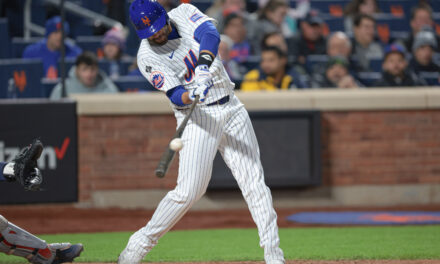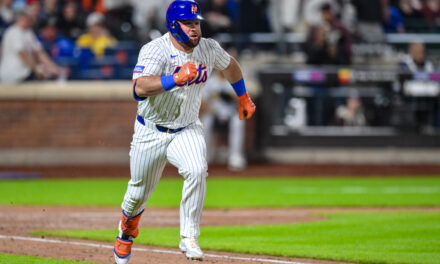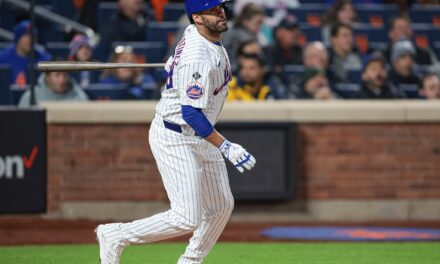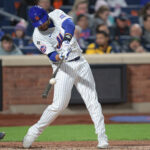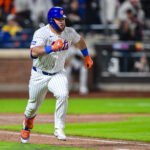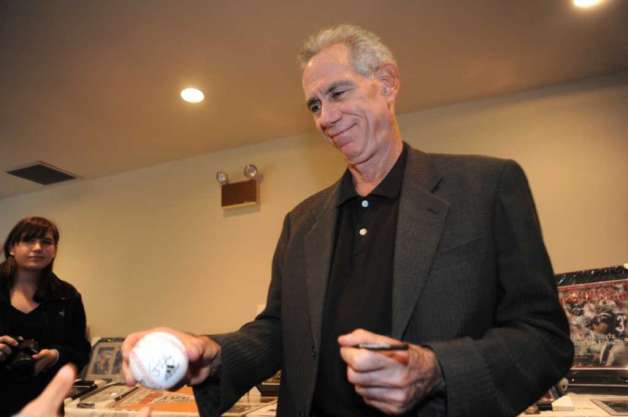
Photo: Connecticut Post
After the Miracle: The Lasting Brotherhood of the ’69 Mets, is a unique retrospective about the greatest Cinderella story in baseball history. One of those miracle men, outfielder Art Shamsky, wrote the book with author Erik Sherman. It eschewed from the purely play-by-play, game-by-game overview of the magical series of events that occurred a half-century ago — in which the Mets went from cellar-dwellers to the penthouse in what seemed like a New York minute.
The book centers around a pilgrimage to meet with Tom Seaver by his California vineyard along with Sherman, pitcher Jerry Koosman, shortstop Bud Harrelson, and outfielder Ron Swoboda.
BW: How did that meeting come about and what were the unknowns that surrounded the trip?
AS: When I sat down with Erik (about two years ago), who has written several books on the Mets, we discussed doing something about the 50th anniversary of the 1969 team. I didn’t want to do a game-by-game reminder of what happened. There have been so many books written about this team. So we just wanted to do something that was a little bit different. We knew at the time that Tom Seaver wasn’t doing well and wasn’t going to be traveling anymore. We didn’t just want to do an interview with him over the phone. And we thought about possibly going out there.
The logistics of it were very difficult. First off, we had to see what players might be available and what their situations were. But the real problem we had was with Tom’s health. When I tried coordinating with his wife, Nancy, she said, “He has good days and bad days. You guys might fly all the way out here and it might be a bad day.” So we really rolled the dice. But we really wanted to sit down and reminisce with everyone. Long story short, it was a great time. It was a real revelation for me and all the other players. That’s the crux of the book – the trip out there.
But the book isn’t just about Tom Seaver. It’s about the relationships all of us had. In part, because of how bad we were before, how we were able to come together as a team and win a championship. And, in subsequent years, how we became friends and stayed friends. This book is about the love we have for one another as we got older. Sadly, we’ve lost ten members over the years – including our great manager, Gil Hodges. But it was a wonderful experience for us to write it.
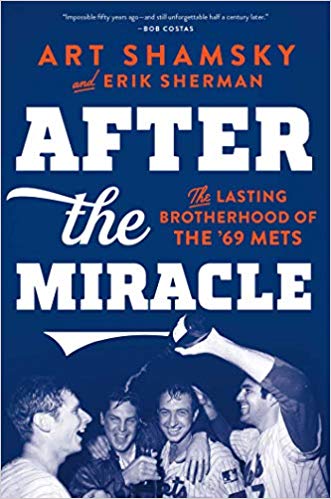 BW: One of those who we lost, but you got to talk with before his passing last year, was your veteran third baseman Ed Charles.
BW: One of those who we lost, but you got to talk with before his passing last year, was your veteran third baseman Ed Charles.
AS: He was such a wonderful guy. We were close friends and it was tough to hear the news that he passed. I knew he had been ill, but it’s always a shock when someone close to you passes. Eddie was really the glue in the clubhouse. He was the kind of guy who would calm you down. He had lived a life that, in retrospect, was very difficult. He grew up poor. He didn’t get the chances to play in the majors like others because he was black. But he had the unique ability to put things in perspective. He could calm you down and make you understand that going 0-for-4 wasn’t the end of the world. The camaraderie he created in that clubhouse was so important.
BW: You touched on the health problems Seaver has been going through recently, which date back to his contraction of Lyme Disease in 1991. We recently found out of his dementia diagnosis and retirement from public life. As sad as that was, it wasn’t completely surprising considering everything we had heard and read before regarding his health. What were your initial thoughts after hearing the news?
AS: We all knew that he wasn’t really 100 percent. And when we decided to do this book, we knew he wouldn’t be traveling anymore – which gave me an indication that he had problems. I’m not a doctor, so I don’t know all the ramifications of Lyme Disease, but I can imagine it’s taken a toll on him. But he did say to us that he would no longer be traveling, that he was going to enjoy being time with his family and the wine business he’s built. He’s got a beautiful home in the Napa Valley. And that’s all he wanted to do. He’s resigned himself to no longer doing any baseball activities.
It was great to hear him talk about things that he did remember. All of us were thrilled to be out there to see him. And because Buddy Harrelson was in the early stages Alzheimer’s, it was really therapeutic for him and Tom to get together. They were roommates and friends for a long time and they shared a lot of memories. It was something very, very special.
BW: For someone who changed the identity of the Mets as drastically as Tom Seaver did, it’s long overdue for him to get a statue outside Citi Field and receive additional tributes from the team.
AS: History will show that he’ll be at the top of the list among the greatest starting pitchers ever. I saw Tom as a rookie in 1967 when I was with the Reds and you could tell he was going to be terrific. And during the years I played with him in New York, every time he went out the mound you knew it would be a quick game. It was likely going to be a shutout or, at least, a victory. He was always going to give you a chance to win. I was there for the near-perfect game (in July 1969) and so many other great performances. He was a wonderful tactician on the mound.
BW: You came over to the Mets in a trade before the 1968 season, which was also the first year for Gil Hodges as manager. Seaver was already established as an All-Star pitcher, even in his second season, and Jerry Koosman had a great rookie year. The team showed signs of improvement but finished ninth in the National League. What was the attitude around the team? Did you feel you were on the verge of a big improvement in 1969?
AS: I remember the first day of spring training, Gil Hodges told us “you will not be the same old Mets.” I hadn’t been there, but I knew what he was talking about. Even though we didn’t play great baseball in 1968, there were signs we were an up-and-coming team. We finished a half-game out of last place, so nobody in the spring of 1969 thought we were going to have the year we did have. But you knew, listening to Gil – the way he managed, the way he ran the team – it was going to going to be all business.
BW: Speaking of Gil Hodges, it’s hard to think of another manager that had a greater impact on a championship team. Tom Seaver, Bud Harrelson, Jerry Koosman, Ed Kranepool all talk about what Hodges meant to them. What lasting effect did he have on you?
AS: My relationship with Gil was one of total respect. We weren’t the best of friends, but I respected his decisions. He was so knowledgeable about baseball. He knew how to get the most out of his players, which is the secret to managing. It’s not about when to bunt or when to hit-and-run or when to do certain things, it’s about having the pulse of the guys in the dugout and knowing when to make personnel moves that you think will help your team win.
He was a strict disciplinarian, he demanded your best ability on the field. He wouldn’t yell at you. But when he addressed you and looked you right in the eye, you knew he was serious. Gil’s greatest ability was that he was able to maximize everyone on that team. Even after I was traded from the Mets in 1971, I respected him. I maintain a great relationship with Mrs. Hodges (Joan, Gil’s widow) and Gil Jr. to this day.
BW: What are your thoughts as his candidacy for the Hall of Fame next year (through the Golden Days Committee)?
AS: When you look at his stats as a player, he’s very comparable to Orlando Cepeda, Ron Santo, and Tony Perez who are all in the Hall of Fame. One interesting thing that most fans forget – there was one year in which he was eligible and he missed out by a small margin and the four people behind him in the balloting each eventually made the Hall. He should have been voted in one way or another – by the writers or the Veteran’s Committee. There’s no doubt in my mind that what he did as a player and as a manager suggests he definitely should be in.
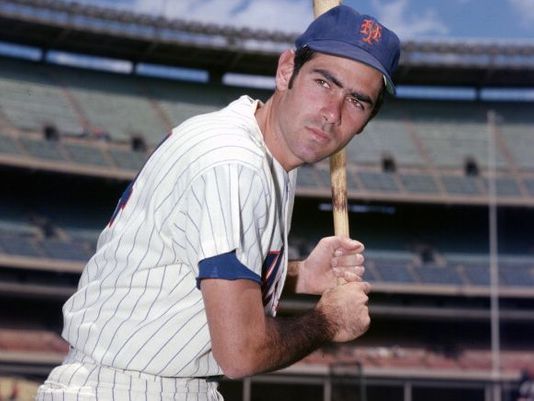
Photo: Cincinnati Post
BW: The 1969 season for you was quite successful, but began very painfully with a back injury that placed you on the disabled list in spring training. What possibility was there that you may not even be able to play during the year?
AS: My year went full circle. I was taking ground balls at first base at the old Miller Huggins Field in St. Petersburg and I hurt my back really bad. They put me in bed for most of spring training and I started the year on the disabled list. I just did not know what was going to happen. And to turn it around, be on a championship team, have a good year at the plate – hitting .300 and being second on the team in home runs – made it all worthwhile. Someone watched over me and made sure I was healthy.
BW: Was there a particular game, a play, a moment during the 1969 regular season that started to make you a believer and make you think you all could win more than just a division title?
AS: I don’t remember one particular game. But I do remember that in August, we were nine games behind the Chicago Cubs (for first place) and something clicked. We began winning all these close games that, before, we’d find a way to lose. From that point on, we were unbeatable. The Cubs began getting tired from (manager) Leo Durocher playing pretty much the same starting lineup every day in contrast to Gil platooning with our lineup.
I knew that with our pitching and our defense we could win almost every game. We had such terrific pitching with Seaver, Koosman, Gary Gentry, Nolan Ryan, Tug McGraw, Jim McAndrew, and others. But what people tend to forget is how great our defense was. We had the best defensive catcher in baseball in Jerry Grote. We had a great defensive shortstop in Bud Harrelson. We had Ken Boswell and Al Weis at second base and Tommie Agee out in center field. Once we got to six, and then five games back and so on, I think everyone in the clubhouse starting to think something was about to happen.
BW: One of Gil’s great strategies, which we talked about earlier, was the way he platooned the lineup. Winning cures everything, of course, but did that cause some a bit of tension for those, including yourself (switching in right field with Ron Swoboda) who felt they deserved a bit more playing time?
AS: Nobody liked it. Not one player on that team said “oh, I’m not playing today. That’s alright, I’ll be playing in a couple of days.” It was difficult for all of us who were a part of it.
If you put me and Ron Swoboda’s years together, it’s an All-Star caliber year. Combined we had 24 home runs and almost 100 RBIs. But, in my case, I had a really good playoff against Atlanta and didn’t get the start in Game 1 of the World Series in Baltimore. It was very frustrating. But Gil’s ability to manage and make us understand that this was the best thing for the team got us through that. And it was working. So I’d never complain about it. Ron and I pulled for one another. As did the other guys who were affected by the platooning. We all felt, by doing that, it would benefit everyone. And, of course, it worked out as well as anyone could have imagined.
Gil managed by feel. He was a guy who knew his players. He played the game that he was taught. He learned from the great Walter Alston when he was playing with the Dodgers. It probably wouldn’t work today, but it worked then.
BW: This team’s legacy spans generations. It was impactful on New York during a time in which the Jets and Knicks were also winning and an important team for the country amid a turbulent era in the United States. Looking back, now 50 years, what do you see as the legacy of the 1969 Mets?
AS: Fifty years later, people can still remember that team for a couple of reasons. First, because of how bad they were before – known as lovable losers – and how they turned it around and defeated a great Baltimore Orioles team that won 109 regular season games. And the other thing to remember is that it happened during some dark times. The world was upside down. The war in Vietnam was tearing this country apart. New York was going under financially, socially, and spiritually. And I think we made people feel better about themselves for a brief period of time. I’ve had people over the years, who weren’t even born in 1969, tell me how much we meant to their parents or grandparents.
If you can affect people in a positive way as we did, and you helped others get through some tough times, what’s better than that? That’s what makes this team very, very special. We may not have been the greatest team to win a World Series, but we were one of the most iconic teams in the history of baseball. Because of that, the 1969 Mets will be remembered forever.


